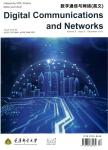Anti-jamming channel access in 5G ultra-dense networks: a game-theoretic learning approach
作者机构:College of Communications EngineeringArmy Engineering University of PLANanjing210007China School of Space InformationSpace Engineering UniversityBeijing101416China College of Electronic and Information EngineeringNanjing University of Aeronautics and AstronauticsNanjing210016China
出 版 物:《Digital Communications and Networks》 (数字通信与网络(英文版))
年 卷 期:2023年第9卷第2期
页 面:523-533页
核心收录:
学科分类:080904[工学-电磁场与微波技术] 0810[工学-信息与通信工程] 0809[工学-电子科学与技术(可授工学、理学学位)] 08[工学] 080402[工学-测试计量技术及仪器] 0804[工学-仪器科学与技术] 081001[工学-通信与信息系统]
主 题:Anti-jamming 5G Ultra-dense networks Stackelberg game Exact potential game Channel selection algorithm
摘 要:This paper investigates the Quality of Experience(QoE)oriented channel access anti-jamming problem in 5th Generation Mobile Communication(5G)ultra-dense ***,considering that the 5G base station adopts beamforming technology,an anti-jamming model under Space Division Multiple Access(SDMA)conditions is ***,the confrontational relationship between users and the jammer is formulated as a Stackelberg ***,to achieve global optimization,we design a local cooperation mechanism for users and formulate the cooperation and competition among users as a local altruistic *** proving that the local altruistic game is an Exact Potential Game(EPG),we further prove the existence of pure strategy Nash Equilibrium(NE)among users and Stackelberg Equilibrium(SE)between users and ***,to obtain the equilibrium solutions of the proposed games,we propose an anti-jamming channel selection algorithm and improve its convergence speed through heterogeneous learning *** simulation results validate the convergence and effectiveness of the proposed *** with the throughput optimization scheme,our proposed scheme obtain a greater network satisfaction ***,we also analyze user fairness changes during the algorithm convergence process and get some interesting conclusions.



